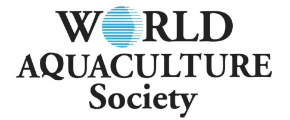COMPARISON OF LIGHT SOURCES IN AQUAPONICS SYSTEMS ON PRODUCTION EFFICIENCIES AND RESULTING ECONOMICS
Aquaponics combines the cultivation of crops in a non-soil medium (hydroponics) with the culture of aquatic organisms (aquaculture). The efficiency of a light source can affect the growth as well as the economic viability of an aquaponics system. Some traditional light sources include sunlight and high pressure sodium bulbs. However, new technology has introduced light emitting diode (LED) lights which last longer and use less energy than traditional light sources, but are significantly more expensive. Although more energy efficient, questions remain regarding how plant growth and economic viability responds to these lights. The goal of this research is to evaluate the cost-effectiveness of each light source and how they impact the growth of the plant.
The three light sources evaluated were high pressure sodium bulbs, LED bulbs and pure sunlight (control). A curtain was placed around each of the 12 individual plant culture units with a 5 cm opening at the base to allow for air flow. A light source was placed within these curtains at a height which was adjusted to obtain the same lumens (light intensity) for each plant. Water was circulated through three replicate 720-L aquaponic systems via a 1/3-hp sump pump. Treatments were randomly distributed across four separate plant culture tables. Italian Large Leaf Basil was germinated in rock wool starter cubes for two weeks and then transferred to a floating raft system on a 15cm x 15cm grid with 16 plants per raft (N = 64 per treatment). Channel Catfish (Ictalurus punctatus) fingerlings were stocked at 15 individuals per 151-L tank and fed a 1.6 mm extruded sinking pellet diet with 50% protein and 16% fat. Plants were harvested every two weeks by cutting each stem just above its lowest node. Plant growth performance included plant biomass, height, and dry weight for each of the three treatments. Fish growth was evaluated monthly for weight and length. Water quality data was collected daily; and water chemistry data was assessed bi-weekly. The light systems were assessed by measuring their photosynthetically active radiation (PAR), heat generation, energy consumption and total energy cost. Additionally, cost-benefit analysis was used to evaluate economic impacts of the various light sources per quantity of biomass produced.













